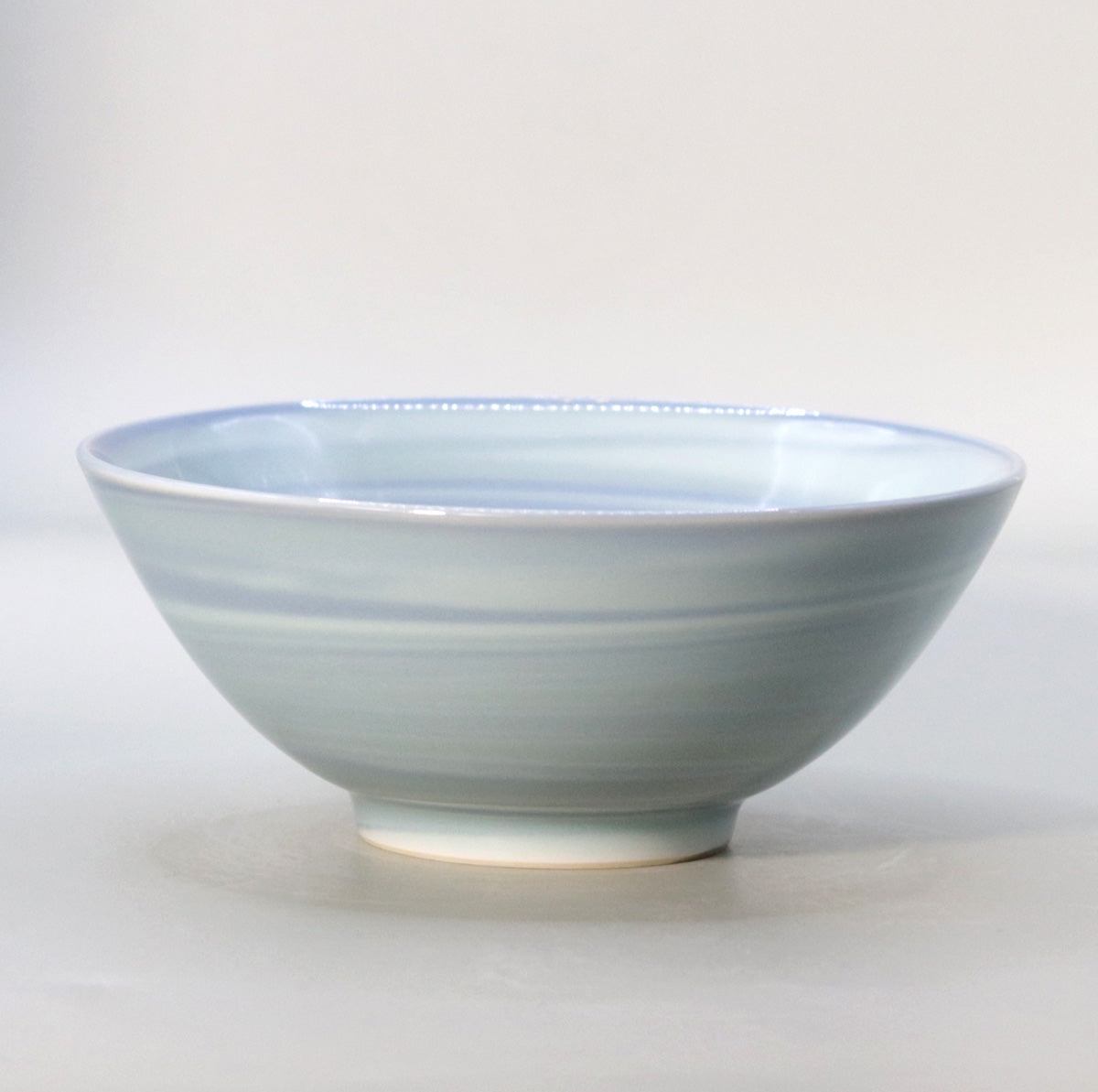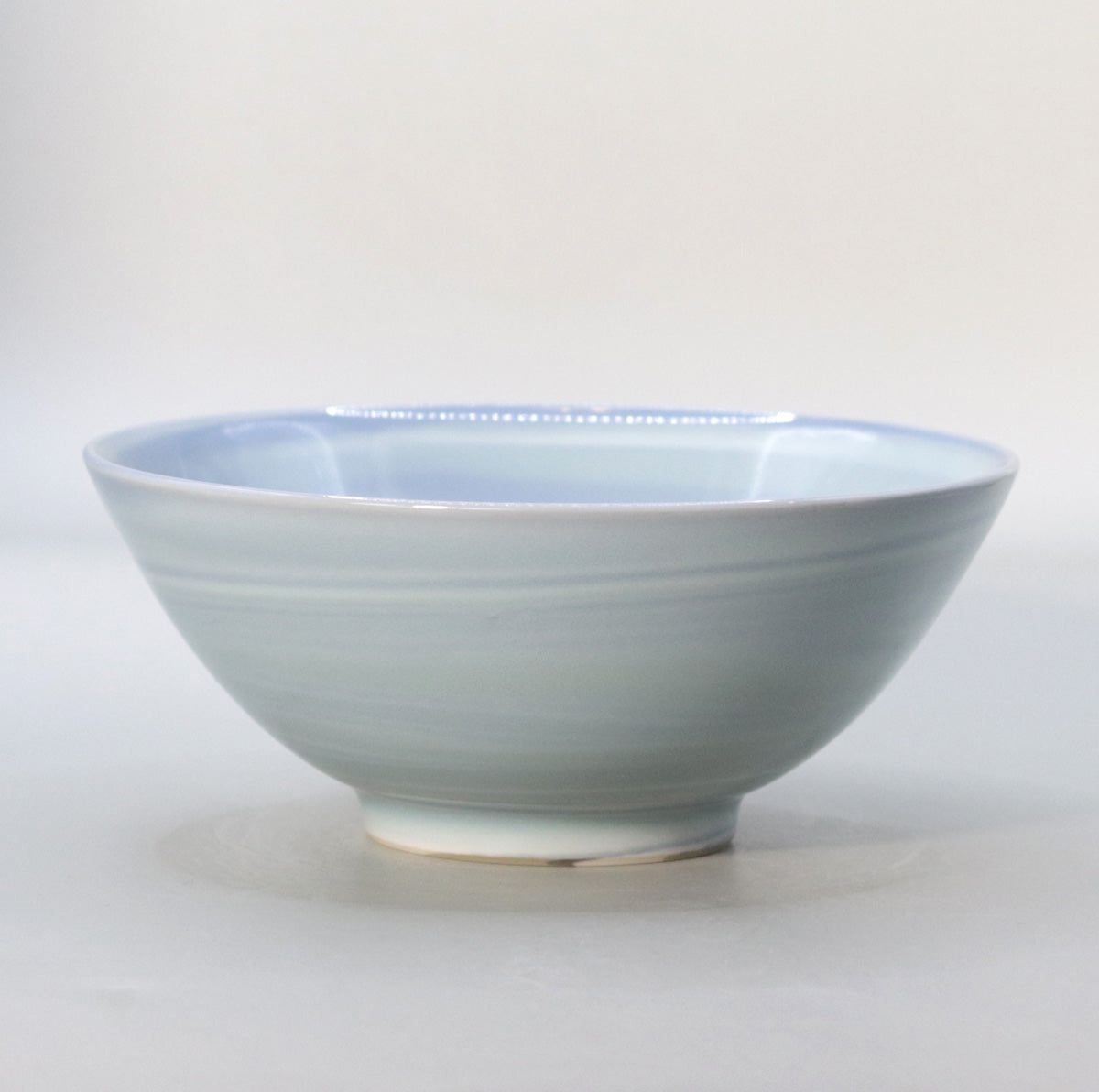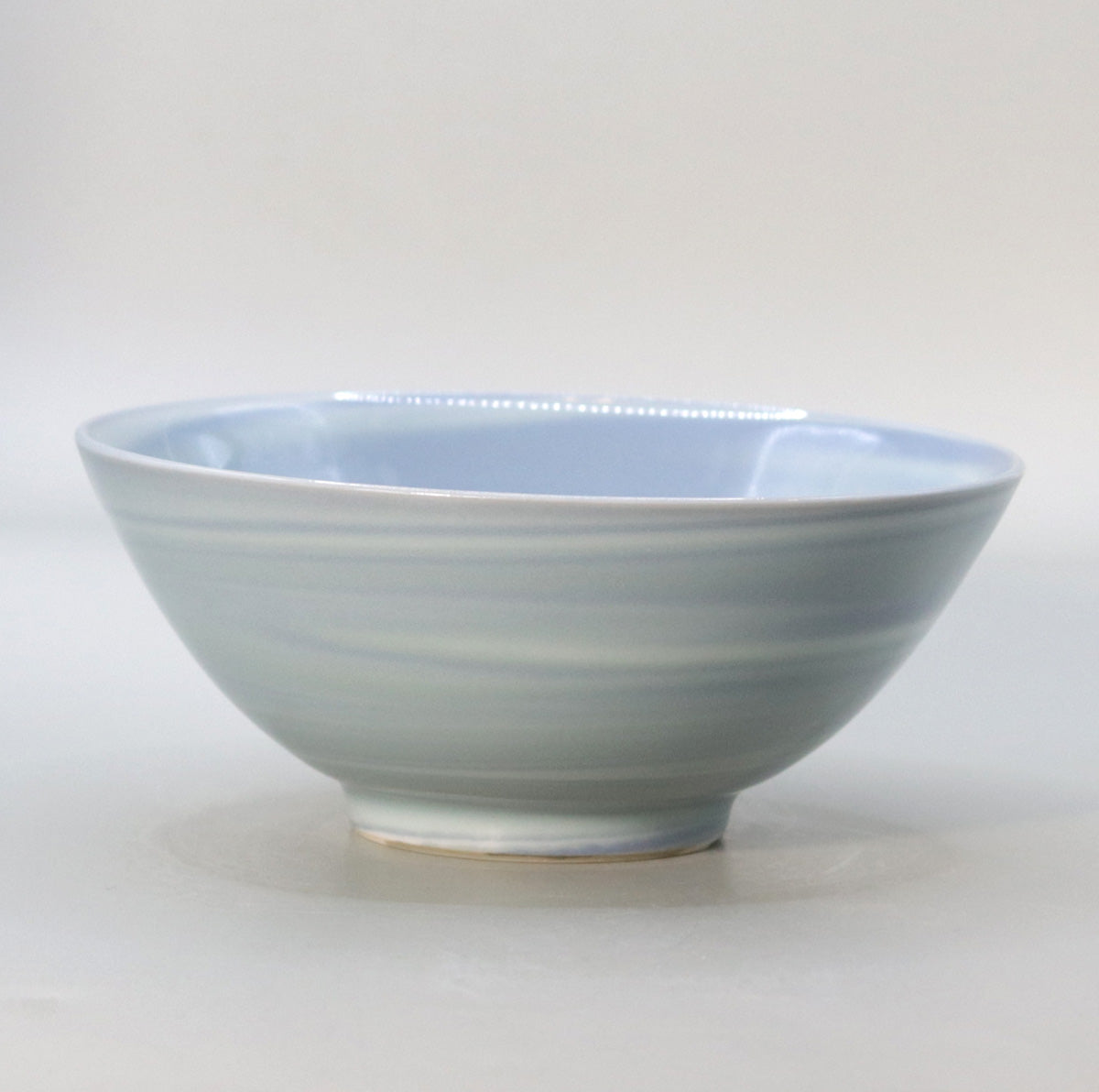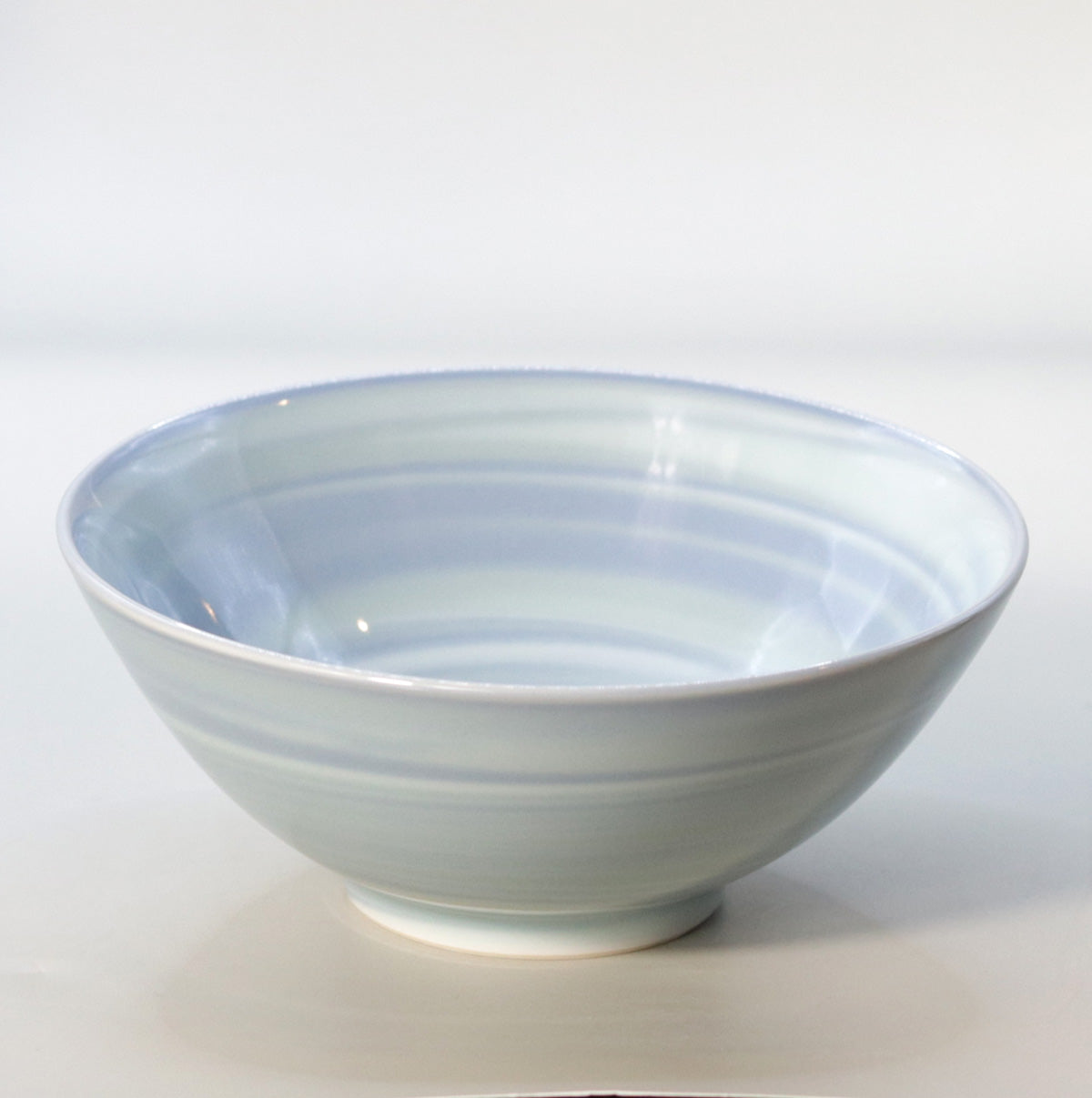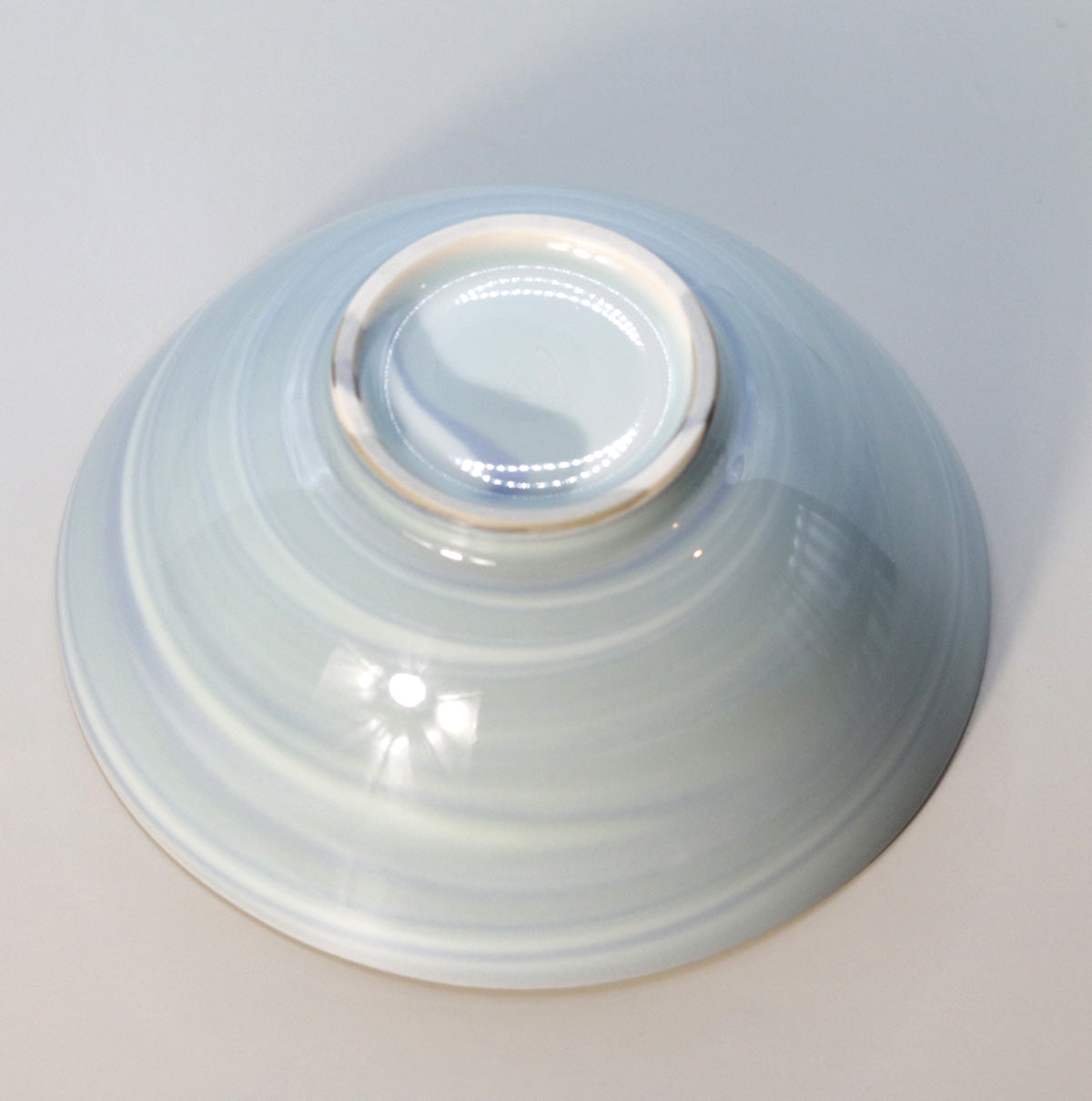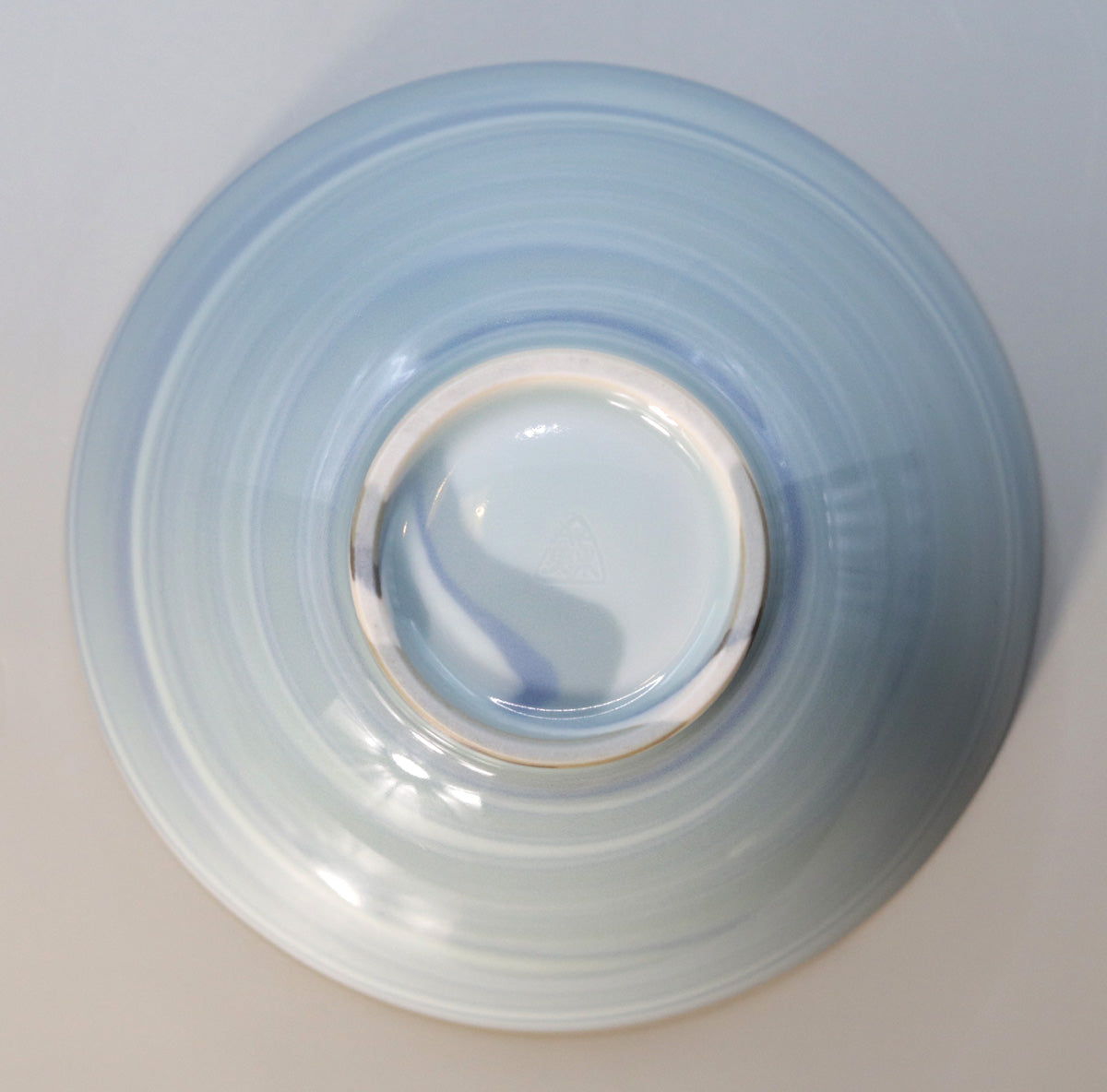Kneaded celadon tea bowl, Suwa Sozan
Kneaded celadon tea bowl, Suwa Sozan
Couldn't load pickup availability
Width: 14.5cm Height: 6.1cm
I. Work summary
This piece, the "Nerikomi Celadon Tea Bowl," is a matcha bowl made using the "nerikomi" technique, in which three types of porcelain clay - white porcelain, celadon, and indigo blue porcelain - are layered and turned in one go on a potter's wheel. The boundaries between the layers form a gentle spiral as the potter's wheel rotates, giving the surface of the bowl an abstract landscape reminiscent of the whirlpools of the galaxy or the Milky Way in the night sky. The elegant yet gentle form, without any sense of artificiality, blends quietly into the atmosphere of the tea ceremony, gently accepting the gestures of the user and the atmosphere of the place.
II. Shape and form
Curved rim
The rim is slightly curved outwards, so it does not get in the way of using the chasen when making matcha. The indigo blue layer on the rim has a faint glow, like the ridgeline of a clear blue sky.
Shallow prospects
The inside of the bowl is shallow, and the kneaded pattern gently converges towards the bottom. When the matcha is poured into the bowl, the green surface of the liquid shines like the moon's shadow filling the center of the night sky, creating a tranquil contrast throughout the entire bowl.
High ground design
The base is carved out slightly lower and flares out gently to the outside. It feels very stable when held in the palm of your hand, and is both lightweight in appearance and practical.
III. Kneading techniques and glaze tones - Layers of depth that reflect the universe
Layered structure of porcelain clay <br data-start="626" data-end="629">White porcelain, celadon porcelain, and indigo blue porcelain are layered in that order and rolled into a plate so that the cross-section is of uniform thickness. The plate is then rolled into a cylinder to form a core of clay, and then pulled up on a potter's wheel. As the pottery rotates, the layers stretch in a spiral shape, creating random ripples, so no two tea bowls look the same.
The role of the transparent glaze <br data-start="755" data-end="758">After shaping, a highly transparent celadon glaze is applied over the entire surface and then reduced firing is performed. The glaze layer acts as a glassy veil that softly envelops the internal layered pattern and gives it depth. Depending on the angle of the light, the boundaries between the layers blur and blend together, giving the piece an appearance like a night sky filled with floating nebulae.
The feel of the glaze surface <br data-start="897" data-end="900">The glaze surface is smooth and free of any minute irregularities, so it feels as if it sticks to the palm of your hand. You can enjoy the kneaded patterns visually, and at the same time, the stillness of the texture is felt by your fingertips, allowing you to concentrate uninterrupted during the tea ceremony.
Ⅳ. Functional beauty and arrangement at tea ceremonies
| season | Recommended main dessert | Synergistic effect with tea bowls |
|---|---|---|
| spring | Sakuramochi and Hanami Dango | The pale pink of cherry blossoms blends into the starry sky at dawn, creating a seasonal transition. |
| summer | Young sweetfish and kudzu manju | The celadon layer, reminiscent of the surface of water, emphasizes the cool feeling and creates the image of a clear stream. |
| autumn | Tsukimi dango and chestnut yokan | The swirls of the kneaded dough resemble clouds circling the harvest moon, enhancing the atmosphere of a moonlit night. |
| winter | Camellia Mochi and Yukihira | The white porcelain layers evoke a snowy landscape, while the green of the matcha reflects signs of life. |
Harmony with Matcha <br data-start="1282" data-end="1285">The vivid green of the matcha stands out against the three layers of blue, creating a visual focal point as if the “core of the universe” had been born at the center of the interior.
Lighting Effects <br data-start="1353" data-end="1356">When lit by warm light from a lantern or candle, the glassy surface of the glaze reflects a faint light reminiscent of the twinkling of stars, enhancing the mysterious atmosphere at night.
V. Historical background and technical significance
The lineage of Nerikomi
The Nerikomi technique originated from the Neriagede masters of the Nara period, and was developed in Satsuma and Kyo-yaki in the late Edo period. Suwa Sozan IV has fused this tradition with the aesthetics of the Suwa family, which is centered on celadon, and elevated it into a means of expressing a modern view of the universe.
Expanding the expression of celadon
The "Sozan Celadon" style established by the first Suwa Sozan was a style that perfected the monochromatic jade color, but the fourth generation has incorporated color and rhythm through multi-layering, expanding the horizons of celadon expression.
Ⅵ. Artist profile and creative approach
Suwa Sozan IV (born in Kyoto in 1970) was raised under the tutelage of Suwa Sozan III and lacquer artist Nakamura Sotetsu XII, and took over the title of fourth in 2002. Based on his research into celadon, he has developed a variety of chemical approaches, including Hotarude, Tobiseiji, and this Nerikomi celadon . He believes that "a piece of work contains a story, and is completed when it overlaps with the user's heart," and entrusts his vessels with grand themes such as the universe, stars, and time. He says that he wants people to experience the sensation of "holding the galaxy in the palm of their hand" with this tea bowl.
VII. Conclusion
The "Nerikomi Celadon Tea Bowl" is a masterpiece that simultaneously embraces the timelessness of a nebula and the transparency of a clear sky in a quiet swirl of white porcelain, celadon, and indigo blue porcelain. When matcha is poured into it, the green light illuminates the twinkling stars in the night sky, turning the moment of tea ceremony into a deep breath of the universe. This tea bowl, which envelops the venue with dignity and tranquility rather than extravagance, reflects the personality of Suwa Sozan IV and speaks eloquently of the possibilities of modern celadon.
Share

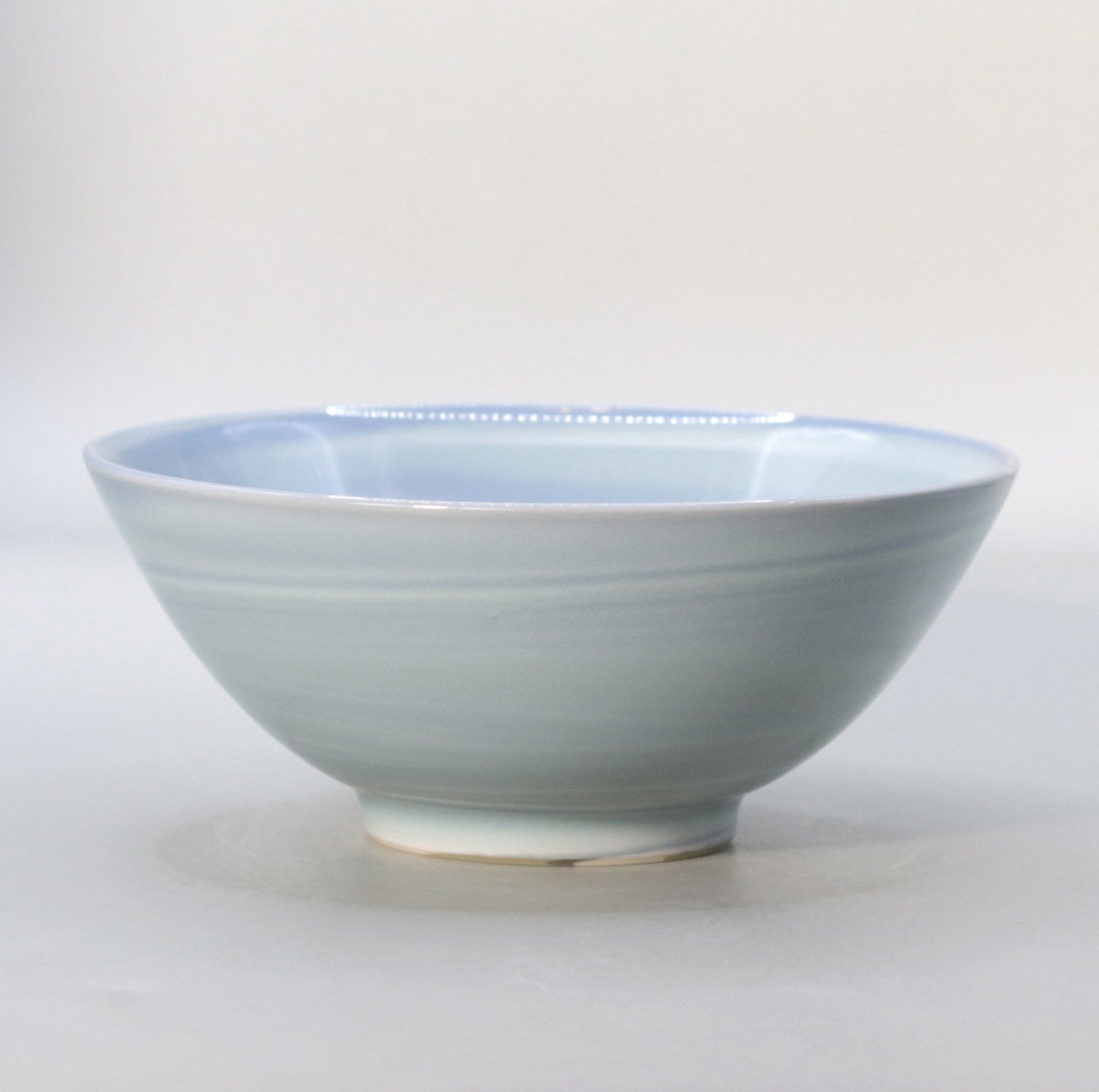
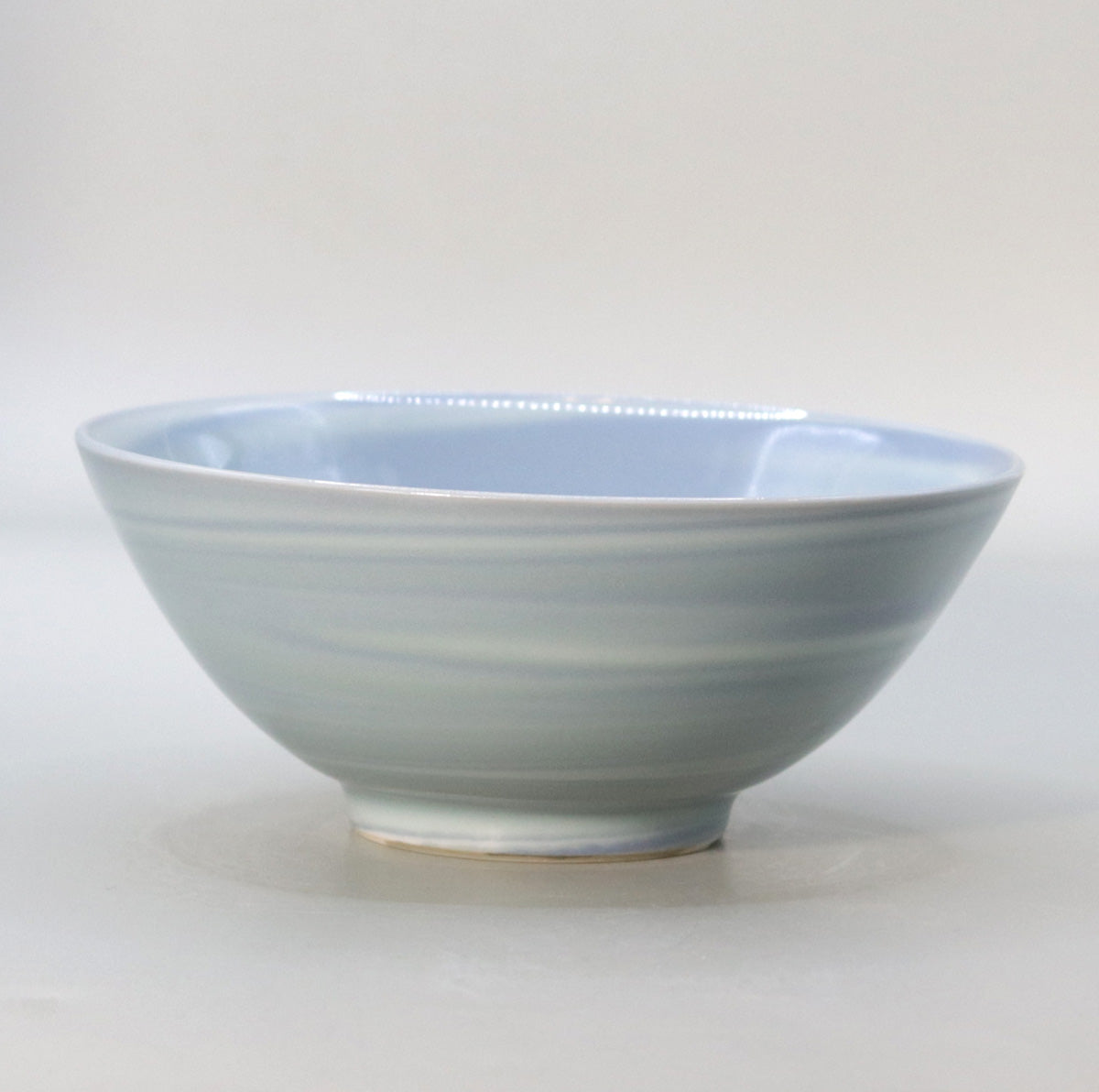


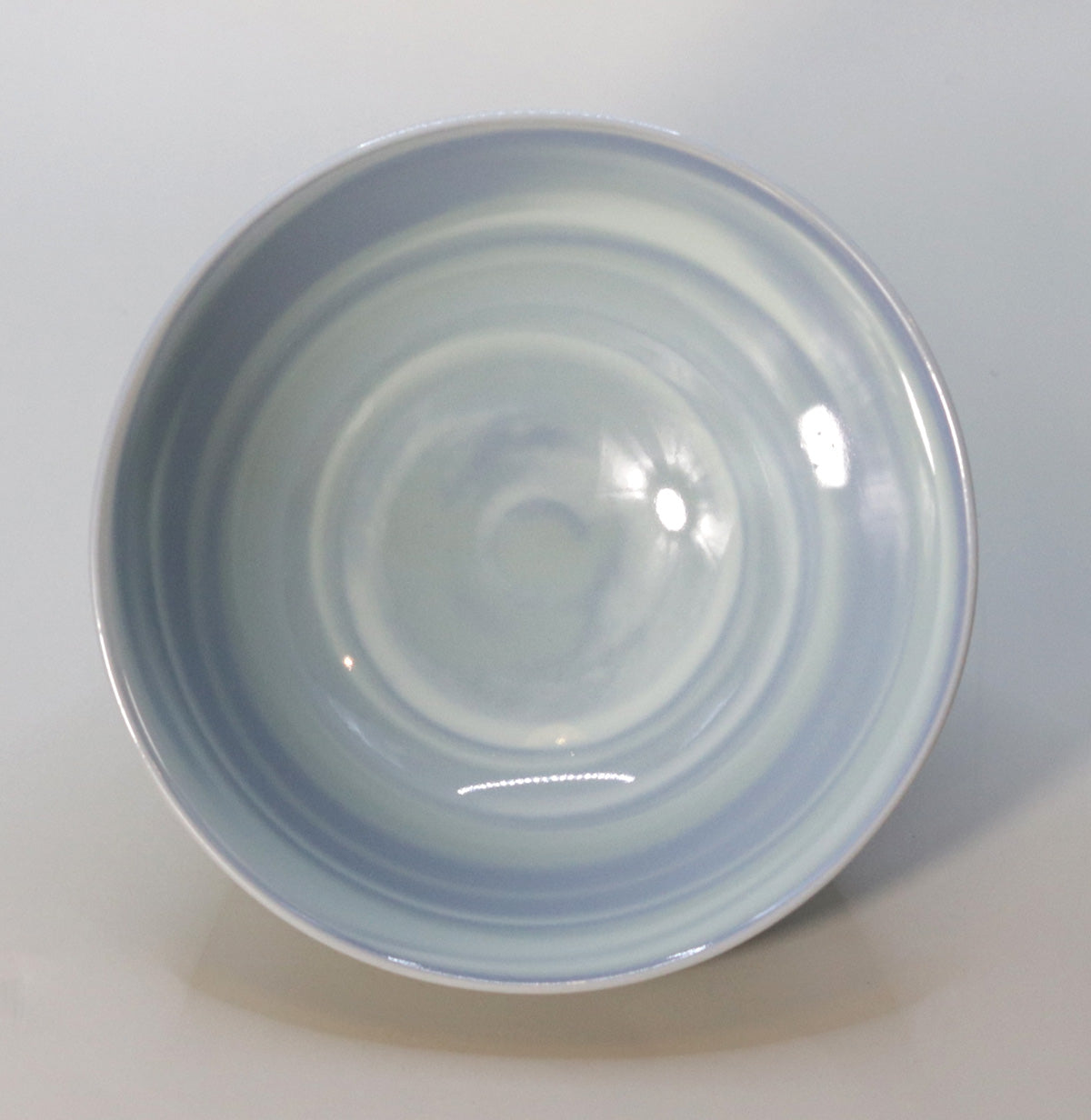
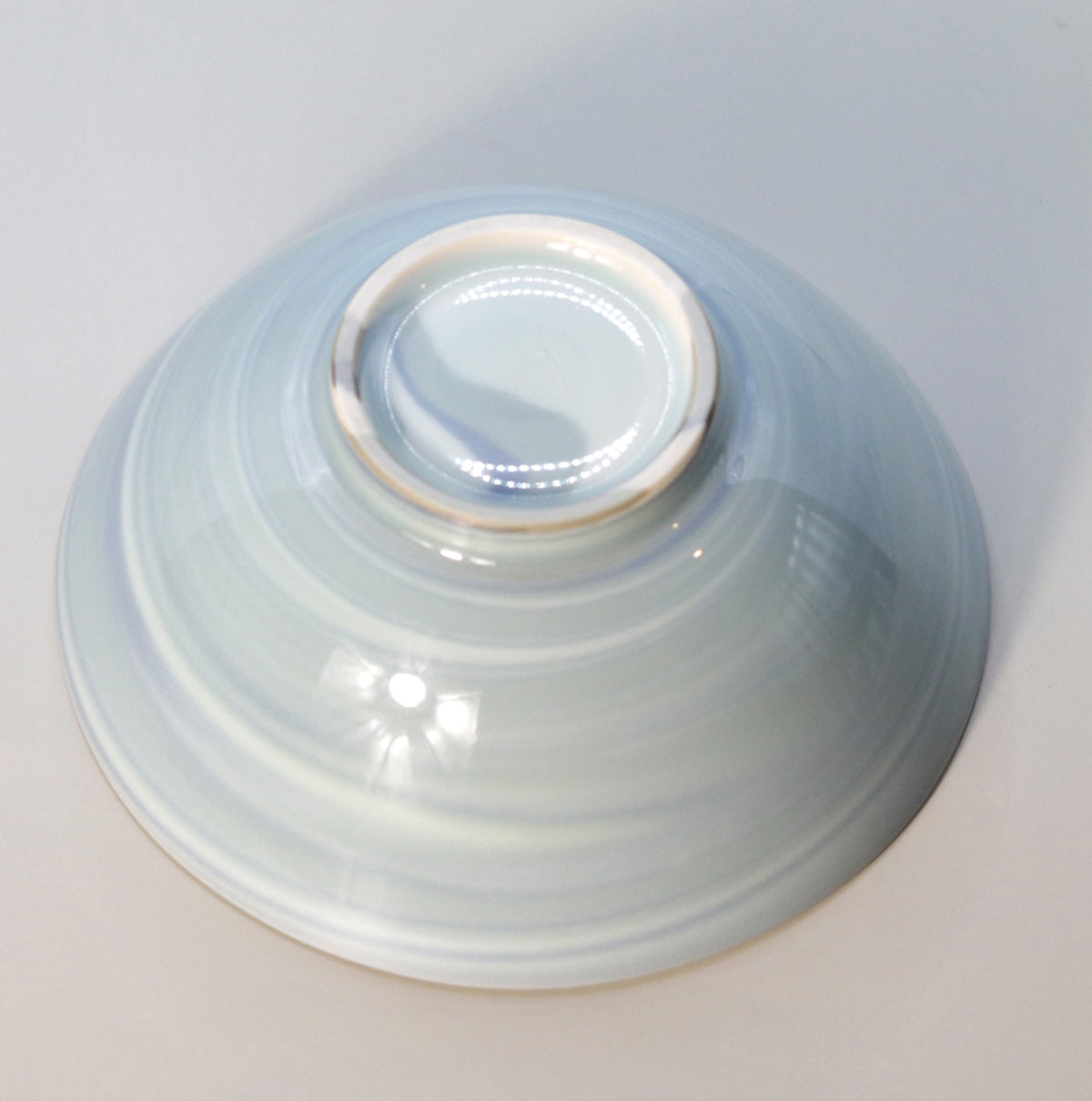
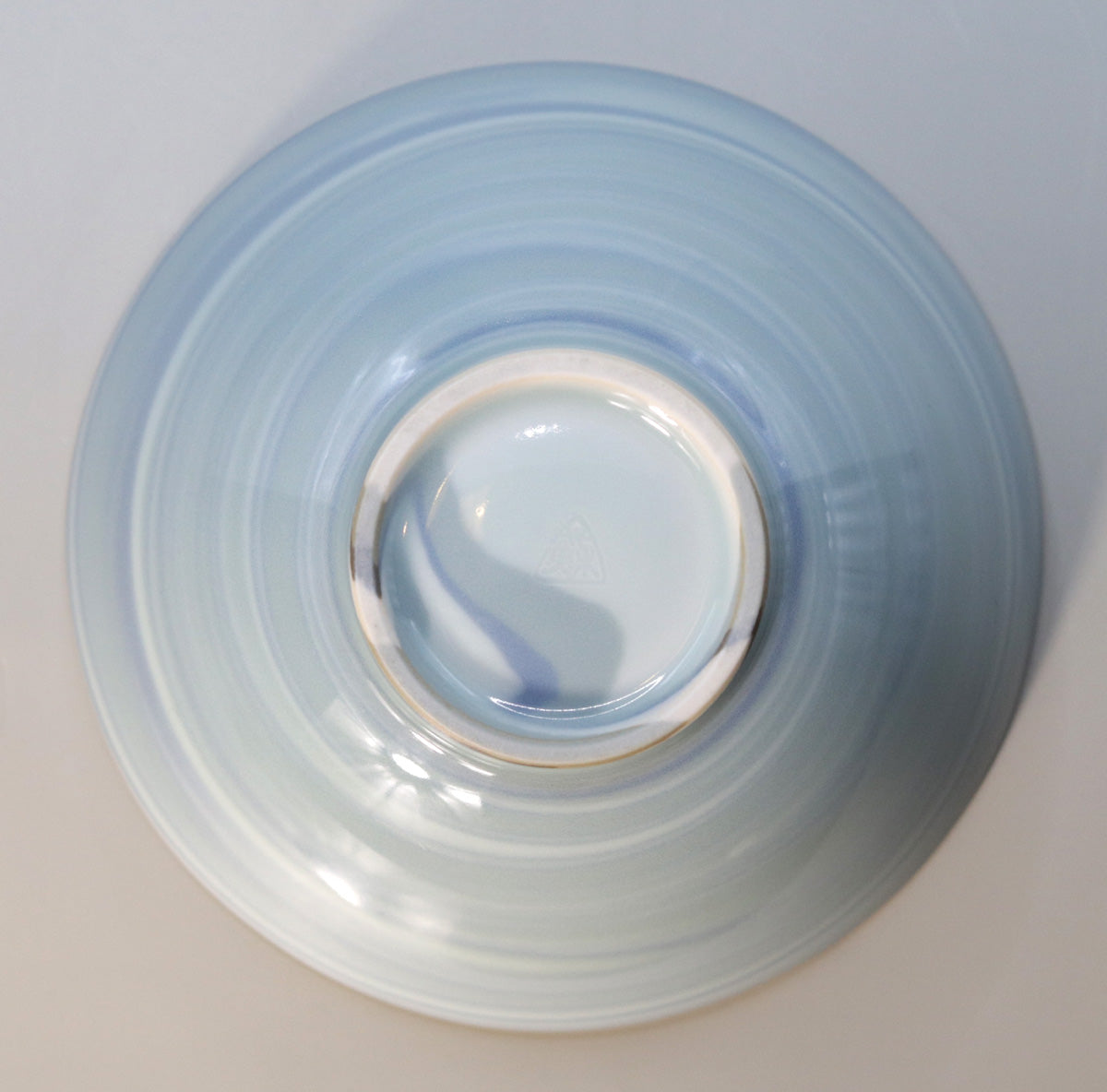
Multi-Column
-
[I will send it to you quickly and carefully]
We carefully package each product in a way that suits it best.
Also, delivery times vary depending on the piece (vessel, etc.).
Items that already come with a box will be shipped within 1-3 days of the order date.
For items that require a box to be made after your order, it will take approximately 30 days for production to be completed and then shipped.
In either case, once we have confirmed your order, we will contact you by email to inform you of the delivery date.
-
[Requests when purchasing pottery]
Even products that look the same may differ slightly in color, shape, size, etc.
The way the glaze is used, the power of the kiln, the firing method, the season, and the humidity also affect the appearance of the pottery.
Please understand the individuality of each piece of pottery and enjoy the unique warmth of handmade.

